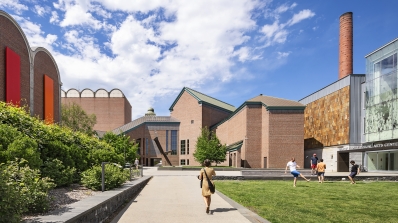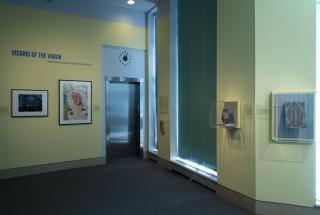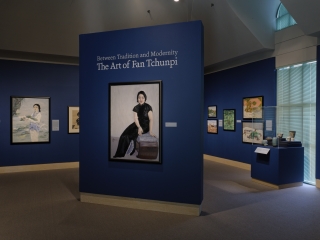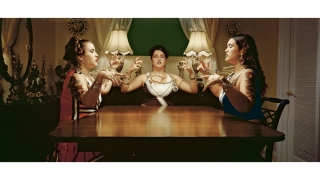Exhibitions Archive
Manifestations of Mary and Personal Devotion
Visions of the Virgin
This installation investigates the Virgin as a trope and looks at some of the ways in which artists manipulate her to evoke personal piety in both religious and secular contexts that transcend particular cultures. It includes four works--a painting on steel, a photograph, a terracotta jar, and a color lithograph--all created in the twentieth century by artists from the Americas. Produced in different cultures and at different times, these objects present distinctive iterations and interpretations of the Virgin Mary as an object of art and devotion.
Traditional Connections / Contemporary Practice
A dichotomy between craft and art has long been present in critical Western art history, founded largely on a deep-rooted system of aesthetic values. These definitions and values have often ignored the contribution of women artists. The most obvious example of this is women's capacity within the world of craft—a term typically associated with a form of "low art" largely created by women in the domestic sphere to which they have been relegated. Some contemporary women artists have chosen to use traditional techniques associated with craft and utilitarian objects to produce unique and innovative works of art, in the process challenging the largely male-dominated art world to overtly acknowledge their talent as artists.
Cubism and Its Legacy
In the first few decades of the twentieth century, avant-garde artists sought to challenge traditional notions about pictorial representation by creating art that responded to the rapidly changing modern world that surrounded them. The most far-reaching and radical of these artistic movements was cubism, developed between 1907 and 1914 by Pablo Picasso and Georges Braque. Their artistic collaboration produced works that defied the Renaissance convention that painting should represent an illusionistic window into the world. Instead, cubism shattered preconceived notions about vision, asserted the flatness of the picture plane and the materiality of paint, and presented subjects from various perspectives and planes at the same time. Cubism and Its Legacy, drawn from the Hood Museum of Art's extensive collection of modern and contemporary art, presents the vast range of work made possible by these developments.
The Vollard Suite
Picasso
Pablo Picasso created the one hundred etchings in his ferociously inventive Vollard Suite between 1930 and 1937. This suite—on view at the museum in its entirety—reveals his mastery of the printmaking process as well as his dialogue with surrealism and the art of the past.
The Art of Fan Tchunpi
Between Tradition and Modernity
This exhibition explores the extraordinary life and work of Fan Tchunpi (1898–1986), one of the most important and prolific Chinese artists of the modern era. As the first solo exhibition of the artist's work since her 1984 retrospective at the Musée Cernuschi (Asian Art Museum) in Paris, Between Tradition and Modernity examines Fan Tchunpi's search for an artistic language that would speak for the self and the nation in an age of crisis, war, and revolution. The oil paintings, works on paper, and ceramics on display in this exhibition demonstrate her efforts to create a dynamic synthesis of Chinese and Western artistic traditions and techniques, while also reflecting the turbulent age in which she lived.
Photographs that startle, disturb, and cause one to question are the subjects of this exhibition, which was organized by Virginia Beahan and Brian Miller, two professors who teach in Dartmouth College's Studio Art Department. Surveying the museum's collection, they selected both black-and-white and color photographs that push boundaries of medium and subject. Works in the exhibition span the second half of the twentieth century to the present day and include photographs by such artists as Fiona Foley, Tierney Gearon, Luis Gispert, Susan Meiselas, Gary Schneider, and Francesca Woodman.



